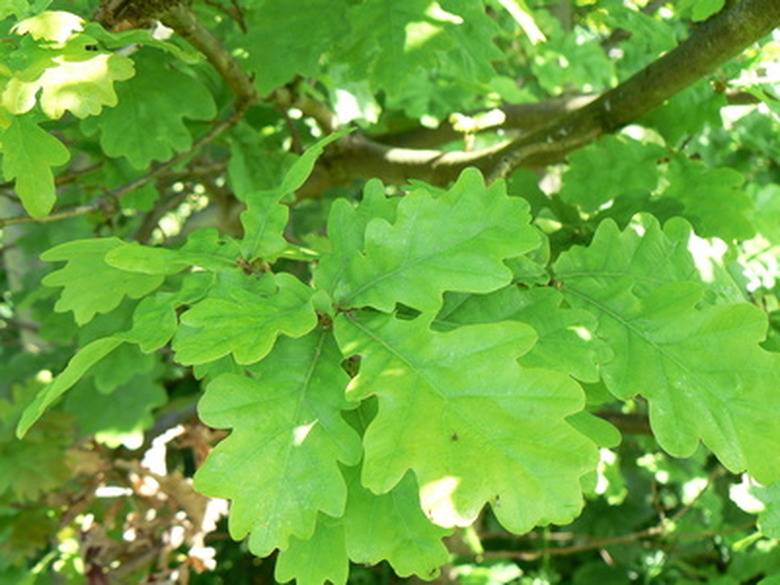Scale On Oak Trees
Scales are unusual-looking insects that can infect a variety of plants, including oak trees. These insects suck the sap from trees and other shrubs. Almost every species of oak can be affected by scales. They will not normally harm the plant unless the infestation is heavy, which can kill off branches and even kill young trees.
Types
Three types of scales can affect oaks: armored, obscure or pit. Obscure scales (Melanaspis obscura) are armored scales, which means they have a small (less than 1/8 inch in diameter), flattened, platelike cover. Soft scales are slightly larger, about 1/4 inches long, and smooth, cottony or waxy. Kermes scales (Kermes spp.) and lecanium scales (Eulecanium spp.) are soft scales. Pit scales are about 1/4 to 1/2 inches in diameter and include the oak pit scale (Asterolecanium spp.) and Ehrhorn's oak scale (Mycetococcus ehrhorni).
- Scales are unusual-looking insects that can infect a variety of plants, including oak trees.
Symptoms
Symptoms of scale infestation are not always apparent. Leaves may appear wilted, turn yellow and then drop prematurely, or a tree may not leaf out until later in the spring. Wilting typically occurs at the end of branches first. The bark of infected limbs may crack and be covered with gum or honeydew. This honeydew often infected with a sooty mold that attracts ants. Pit scales will produce ring-like swellings on the bark.
Controlling
These insects are easiest to kill when they are young and still in the crawler stage or in the spring when nymphs first become active. At that time, these insects can be killed using an ultrafine oil, Acephate, cyfluthrin, horticultural oil, permethrin, insecticidal soap or malathion plus carbaryl. Sprays should be used according to the directions listed on the bottle for other pests.
- Symptoms of scale infestation are not always apparent.
- This honeydew often infected with a sooty mold that attracts ants.
Natural Enemies
The best control for scales is to encourage their natural enemies in your garden. Various beetles and wasps are known to feed on them. Unfortunately, ants seeking the scale secretion honeydew or dusty conditions can reduce the population of these natural enemies. In some cases, it may be necessary to control the ants that feed on the honeydew and protect the scales from these enemies.
Other Control Methods
Unfortunately, there is very little information about scale-resistant oak cultivars. However, Daniel Gilrein, a horticulture specialist with Cornell Cooperative Extension, suggests replacing scale-prone trees with another species that might be less susceptible. Other control methods include limiting fertilizer, especially nitrogen, on infested trees, pruning or scrubbing limbs that are heavily infested or power-washing scales from the tree.
- The best control for scales is to encourage their natural enemies in your garden.
- In some cases, it may be necessary to control the ants that feed on the honeydew and protect the scales from these enemies.
